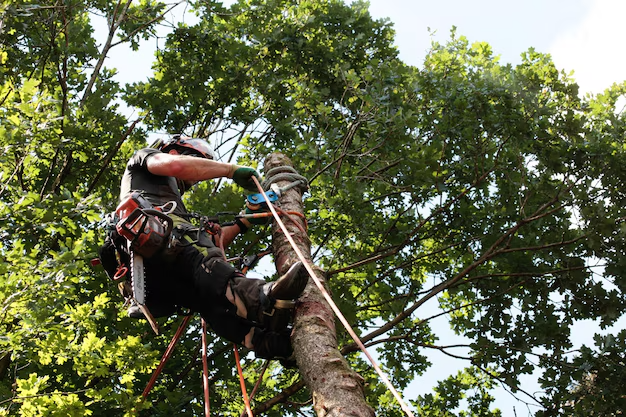Bournemouth and Poole are two of the South Coast’s most beautiful and ecologically rich areas, with a stunning mix of natural landscapes, dramatic cliffs, and historic woodland. For those of us in tree surgery, this region presents both an incredible privilege and a unique challenge — particularly when working in and around the famous Chines and the towering pine trees that define the skyline.
What Are the Chines?
If you’re local, you already know — but for anyone new to the area or curious about the name, a Chine is a steep-sided river valley carved through soft cliffs by stream erosion. These ravines are unique to the south of England, especially Dorset and the Isle of Wight.
Bournemouth and Poole are home to several notable Chines, including:
- Alum Chine
- Durley Chine
- Branksome Chine
- Canford Cliffs Chine
- Talbot Woods & Coy Pond area
- Fisherman’s Walk Chine
Each Chine has its own character — from the tropical-style gardens and pedestrian walkways of Alum Chine, to the more rugged and forested trails of Branksome and Canford Cliffs. But one thing they all share is a rich woodland canopy, with an abundance of native and non-native trees — most famously, the majestic Monterey and Scots pines.
Pine Trees: The Silent Giants of the South Coast
The pine trees in Bournemouth and Poole are a defining feature of the landscape. Their tall, straight trunks and evergreen canopies provide habitat for wildlife, shelter from coastal winds, and an unmistakable aesthetic that visitors and locals alike love.
As a tree surgeon, these pines are both a joy and a responsibility. While many have stood for decades — even over a century — they face increasing stress from storms, coastal winds, root disruption, and urban development. Regular maintenance, health assessments, and sensitive pruning are vital to keep them safe and thriving.
We often work on:
- Monterey Pines (Pinus radiata): These are especially common near the cliffs and coastlines. Though beautiful and fast-growing, they can become unstable as they mature — particularly if roots are undermined by erosion or foot traffic.
- Scots Pines (Pinus sylvestris): Native and hardy, these trees are incredibly resilient but can suffer from fungal infections or storm damage.
- Corsican Pines (Pinus nigra): Less common but often seen in more landscaped or planted areas.
Tree Surgery in the Chines
Working in the Chines requires a deep respect for both nature and heritage. Many trees are in conservation areas or protected under Tree Preservation Orders (TPOs), and access can be tricky due to steep slopes and tight paths. Our work ranges from:
- Crown reductions to reduce wind loading on exposed trees
- Deadwood removal for safety, especially along walking trails
- Storm damage recovery — often after coastal storms or high winds
- Felling and replanting where trees are badly damaged or have died
Each job is different. Some days we’re working rope-and-harness in a 25-metre pine with a sea view. Other days, we’re carefully climbing through the undergrowth in a Chine, mindful of the protected wildlife, public safety, and nearby properties.
Why Local Knowledge Matters
As a Bournemouth-based tree surgeon, understanding the land here — from the sandy soils of the clifftops to the dense clay in the Chines — makes a huge difference. We know which trees are struggling with root space, which spots get hit hardest by the sea breeze, and how to balance conservation with practicality.
Our goal is always the same: to keep the landscape healthy, safe, and beautiful for generations to come.
If you’re in Bournemouth, Poole or the surrounding areas and need professional, responsible tree care — particularly around the Chines or large pine trees — get in touch. Whether it’s a one-off inspection or ongoing maintenance, we’re happy to help keep our corner of Dorset green and growing.

